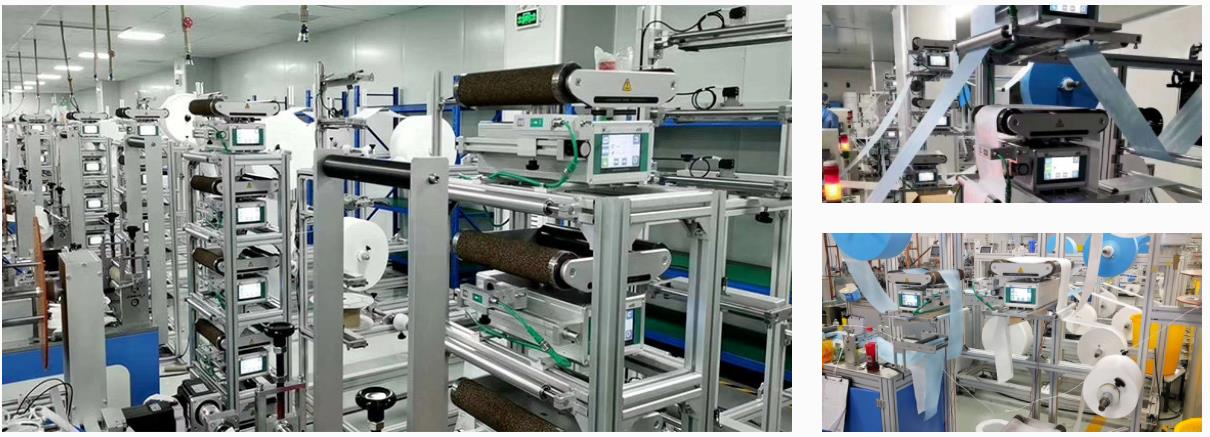In industries reliant on continuous web handling and processing, such as printing, packaging, textiles, and paper manufacturing, web guide machines are indispensable. These web guide systems are instrumental in achieving precise web alignment and control, leading to enhanced product quality, reduced waste, and heightened production efficiency. However, with a multitude of options available in the market, choosing the right web guide machine tailored to your specific requirements can be a challenging task. In this article, we delve into the process of selecting the ideal web guide machine by exploring the different types of web guide systems and the key factors to take into account when making this critical decision for your industry.

Types of Web Guide Machines:
Edge Web Guiding Systems: These are the most commonly used web guide systems. They monitor and manage the web's position by detecting its edges. Sensors on either side of the web continuously track its edge positions, and the control system makes adjustments to keep the web centered and aligned.
Center Web Guiding Systems: Also known as line guiding systems, these systems regulate the web based on its centerline. A single sensor detects the web's center location and adjusts the guiding mechanism accordingly. Center guiding systems are especially effective when dealing with irregular or inconsistent edge materials.
Sensor-Based Web Guide Machines: These systems employ various sensor technologies to detect the web's position and make necessary adjustments. Sensor options include ultrasonic sensors, infrared sensors, line-scan cameras, and laser sensors, with each offering distinct advantages based on factors such as the web material, production environment, and required precision.
Hydraulic Web Guide Machines: Hydraulic web guide machines utilize hydraulic actuators to make real-time adjustments to the web's position. They excel in heavy-duty applications where substantial force is required for precise web guidance.
Pneumatic Web Guide Machines: Pneumatic actuators control the web's position in these machines. They are known for their rapid responsiveness and precise adjustments, making them well-suited for high-speed manufacturing processes.
Electric Web Guide Machines: Electric actuators are responsible for controlling the web's position in electric web guide machines. They are often preferred for their low energy consumption and ease of integration with other automated systems.

Factors to Consider When Choosing a Web Guide Machine for Your Industry:
Selecting the right web guide machine is a decision that can significantly impact production efficiency, product quality, and overall operational effectiveness. Here are the key factors to consider:
Types of Web Material: Evaluate the web material used in your industry, such as paper, film, foil, fabric, or non-woven material. The web guide machine must be compatible with the specific properties and requirements of the material you are working with.
Web Width and Speed: Determine the machine's maximum and minimum web widths and production speeds to ensure it can accommodate your entire range of web widths and speeds.
Alignment Precision: Identify the level of precision required for your production process. Industries like printing and converting may necessitate web guide machines equipped with advanced sensing technology and precise control mechanisms.
Guiding System Type: Choose the guiding system type that best suits your needs. Edge guiding systems are typically used for continuous and constant webs, while center guiding systems are preferred when dealing with irregular or inconsistent edge materials.
Sensor Technology: Examine the sensor technologies used in the web guide machine and select the one that aligns with your web material and guiding requirements.
Control Mechanism: Consider the control mechanisms available for the web guide machine, ranging from automatic systems that make real-time adjustments based on sensor feedback to manual control requiring operator interaction. Your choice depends on the desired level of automation and operator engagement.
Integration with Existing Equipment: Ensure the web guide machine can seamlessly integrate with your existing manufacturing equipment and automation systems. Compatibility with other machinery is essential for effective operation and communication between systems.
Web Tension Control: If web tension management is critical for your process, consider web guide machines equipped with integrated tension control functions. Maintaining web stability is essential for product quality.
Maintenance and Support: Assess the maintenance requirements of the web guide machines and the availability of technical support from the manufacturer or supplier. Regular maintenance and reliable support are essential for the machine's longevity and peak performance.
Cost and Return on Investment (ROI): While the initial cost is a factor, consider the long-term return on investment. A high-quality web guide machine that enhances production efficiency and product quality can yield substantial long-term benefits.
Training and User-Friendliness: Evaluate the machine's user-friendliness and the availability of operator training. Proper training ensures operators can efficiently utilize the machine and address minor issues.
Summary:
Selecting the right web guide machine is a pivotal decision with the potential to impact the efficiency and productivity of your manufacturing process significantly. A well-chosen web guide machine can lead to improved product quality, reduced waste, and more efficient production processes, all of which contribute to the overall success of your company.

